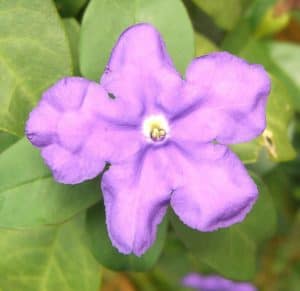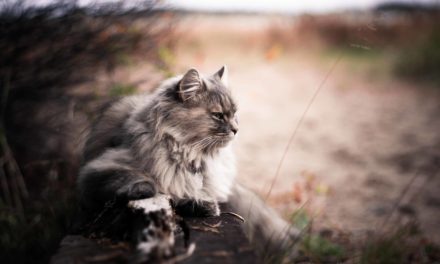Dogs and Toxic plants in Australia – list of plants you don’t want near your dog!

Brunfelsia also known as Yesterday, Today and Tomorrow. Photo: Philipp Weigell CC-BY-3.0
Small animal Veterinarian, Dr Anne Fawcett was interviewed recently for a Pets4Life podcast about the common animal emergencies she sees in her clinic. Dogs and toxic plants in Australia was one of the many things Dr Fawcett talked about in the podcast. She mentions a plant Brunfelsia also known as Yesterday, Today and Tomorrow. This pretty flower causes serious illness including seizures in dogs.
Dr Chris Brown is also passionate about keeping dogs safe from toxic plants and other dangers in his guide to a dog-friendly backyard.
Keep your pet safe from toxic plants and household poisons is the topic of our three-part blog series.
Part one in our series is ‘Dogs and Toxic Plants in Australia’. While researching into toxic plants and possible effects in dogs, Kevin Crawshaw discovered there are many dangerous plants out there, which are mostly introduced species. The 21 plants in Kevin’s list appear to be commonly found in Australian suburban gardens, indoor plants and outdoor areas. Our list is a guide only and by no means fully comprehensive. Check out the resources below.
Generally, with a little investigation, and good common sense your canine friend will remain safe from toxic plants and enjoy exploring their world. Ask the vet if you’re unsure about the plants in your home.
Dogs and toxic plants in Australia list
| Scientific Name | Common Name(s) | Possible effect on your dog |
|---|---|---|
| Apocynum Cannabinum (American) (NOT to be confused with European Plectranthus Caninus) | American Dogbane is extremely dangerous, but European version is simply a mild repellent to dogs | Cardiac Arrest |
| Convallaria Majalis | Lily of the Valley | Vomiting, diarrhoea, a drop in heart rate, severe cardiac arrhythmias, and possibly seizures |
| Daphne Spp | Daphne | Vomiting, diarrhoea, internal bleeding and possible rapid death |
| Brunfelsia | Yesterday, Today and Tomorrow | Salivation, vomiting, diarrhoea, muscle tremors and seizures |
| Tradescantia albiflora | Wandering Dew | Allergic skin reaction which can lead to rashes and calluses |
| Madagascar jasmine | Stephanotis | Possible death after eating the seed pods |
| Brugmansia | Angels Trumpet | Behavioural changes, vomiting, breathing and heart rate changes, tremors, etc and can lead to death |
| Eupatorium rugosum | White Snakeroot | ‘Tremors’ with dangerous cumulative intake |
| Laburnum anagyroides | Golden Chain, Laburnum | Sleeping, vomiting, convulsions (death is rare) |
| Lantana camara | Lantana, Red Sage, Yellow Sage, West Indian Lantana, Shrub Verbena | Vomiting, diarrhoea, weakness and possible liver failure |
| Nerium Oleander | Oleander | Vomiting, diarrhoea, drooling, drowsiness and can lead to heart issues |
| Urtica spp. (Australian species is Laportea) | Stinging Nettles | Can be extremely painful when touched |
| Cycas revoluta | Sago Palm, King Sago, Sago Cycad, Japanese Sago Palm | Extremely poisonous with one seed leading to diarrhoea, drooling, vomiting, black (bloody) stools and possible death |
| Gelsemium sempervirens | Yellow jasmine, Carolina Jessamine, Woodbine | Staggering, weakness, shivering, laboured breathing, double vision, paralysis and/or death. |
| Digitalis purpurea | Foxglove | Diarrhoea, low irregular heartbeat, drowsiness, loss of appetite, convulsions. |
| Hydrangea macrophylla | Hydrangea | Acute gastro-enteritis, but dogs will recover. |
| Ilex spp | Holly | Eating berries can lead to gastro-enteritis, unconciousness, dizzyness, vomiting. |
| Macadamia spp | Macadamia nut | 4 to 5 nuts can be lethal to a dog. Posterior paralysis, recumbency, muscle tremor. |
| Rhododendron spp | Rhododendron, Azalea | Loss of appetite, repeated swallowing, excessive salivation, nasal discharge, bloating or vomiting, abdominal pain, frequent defecation. Dogs can recover but can also be lethal |
| Hedera helix | English Ivy | Diarrhoea, vomiting, laboured breathing, nervous disorders, and convulsions. |
| Euphorbia spp | Spurge, Milkweed, Poinsettia, Caustic bush | Nausea, vomiting, diarrhoea, delirium. Latex causes dermatitis, caustic to the skin and eyes, causing temporary blindness. Fruits are purgative and toxic. |
More resources on dogs and toxic plants in Australia
http://agriculture.vic.gov.au/pets/dogs/dog-health/toxic-plants-for-dogs
https://www.aspca.org/pet-care/animal-poison-control/toxic-and-non-toxic-plantshttp://www.weeds.mangrovemountain.net/dogs.html
http://www.petpoisonhelpline.com/poisons/
https://www.rspcansw.org.au/learn/pet-hazards/toxic-plants-for-pets






